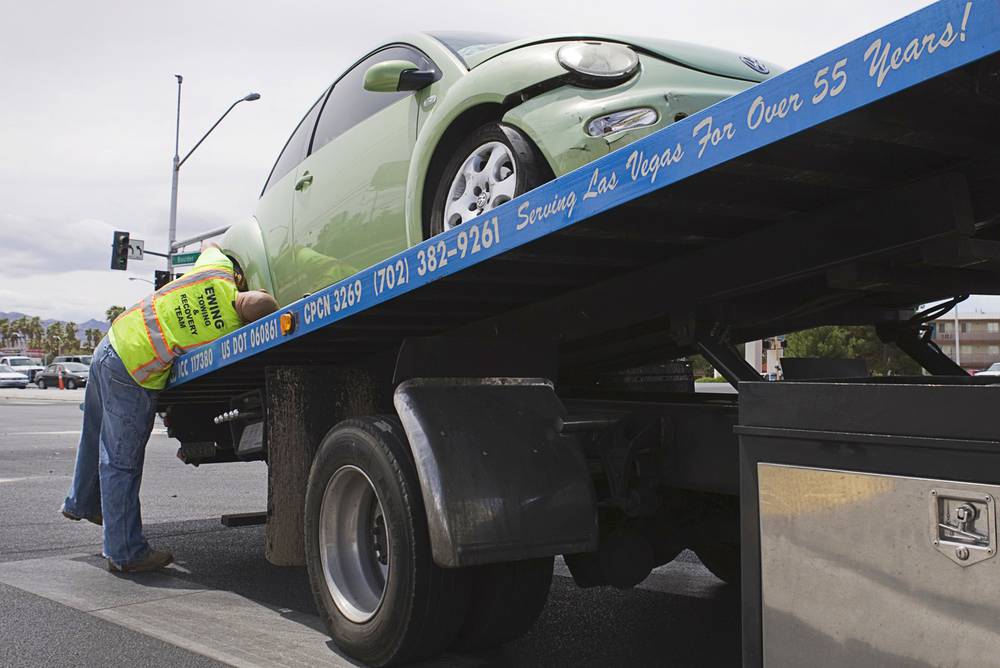In a move Las Vegas Metro police say will free them up to dramatically expand traffic law enforcement, as of March 3, the department will no longer respond to accidents in which no one is hurt. To put that in perspective, Metro responded to 23,000 accidents in 2013, 13,000 of which were property damage only. Metro spokesman Larry Hadfield says that means you’ll be acting as your own investigator in most cases from now on.
But if you don’t investigate correctly, it could cost you down the road in higher insurance premiums, according to Micah Bleecher, owner of the Bleecher Insurance Agency: “The one who has the best documentation is the one who’s going to be okay.”
Don’t panic. Here’s your Weekly primer on making sure you don’t get screwed after your next fender-bender. (And remember, if you’re on a state highway or interstate, none of this applies, so just call 911.)
1. Get your car to the side of the road. (If you can’t because of the damage, call 911 and the police will come.) Then make sure you’re okay before getting out of your vehicle. (If you feel you’re hurt in any way, call 911.)
2.Observe the other driver’s behavior. If he or she is agitated, aggressive or won’t cooperate, get the police involved.
3.Once you know the situation is safe, exchange information, including names, addresses, phone numbers, driver’s licenses, insurance and vehicle information (including make, model, license plate number and VIN) and the names and addresses of the registered owners.
4.If there are any passengers or witnesses present, get their names and phone numbers, too.
5.Get out your phone and take photos and video of the accident scene. Some insurance companies offer smartphone apps that help you gather visual evidence.
6.Call your insurance company.
7.Go to dmvnv.com and download and fill out an SR-1 “Report of Traffic Accident” form.
8.If the other driver has no insurance, you don’t need to call Metro—there’s an area on the SR-1 form to note that information. Once your form is on file, the insurance company can use it the same way they would use a police report.
In practice, it sounds promising, but Bleecher says not to be surprised if this makes insurance rates go up. “I’m not sure that citizens are going to be as good as officers” in accurately reporting accident information, Bleecher says, stressing the importance of taking both video footage and pictures.
Without visual information, he says Metro’s new policy “could make assigning responsibility to accidents much more difficult. It could mean more labor, more investigation, more administrative costs for insurance companies,” which, no doubt, will be passed along to the consumer.
And as for personal injury lawsuits? Buckle up, Bleecher says. “I think it’s going to end up helping the Glen Lerners of the world. There’s going to be a lot more litigation, I would think. Things are going to be more difficult to prove.”







